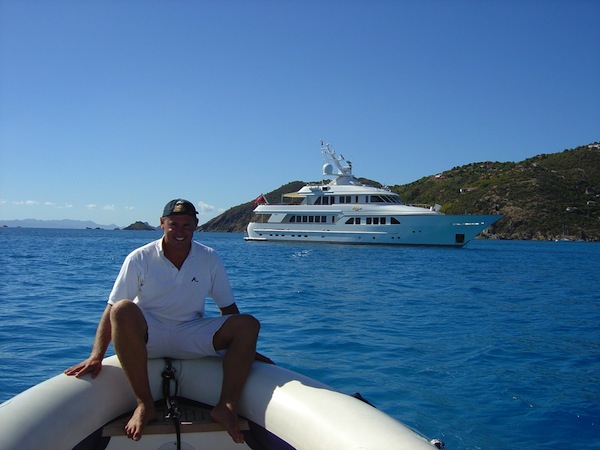Looking back at 2014: captain interviews
In the lead up to the start of a new year, we look back at our coverage of the superyacht crew sector in 2014. Here, we recollect some of the prominent superyacht captains we have interviewed during the year.…
Built for purpose
Launched in February 2012, Safira made her maiden voyage to Greenland for an owner trip and charter. We spoke to Captain Walter Wetmore about the rigorous planning and considerations that he and his crew had to undertake due to the remoteness of the destination and length of the trip.
Captain Wetmore’s significant involvement in the shipyard and design phase made a crucial impact on the success of the yacht’s suitability for such a trip, and this is something that he strongly recommends. “If you have a captain with good experience and the owner and the captain trust each other and work well together, the cooperation of the owner with his captain or design team is priceless. Read the online coverage in full here.
Keeping up with the Mitchells
Captains Brian and Sue Mitchell, also qualified Y3 engineers, have been working permanently as a crew couple since 1984. Their work has taken them on board several superyachts, including 30m Lia Fail, 30m Summer Suite, 37m Argusea and, most recently, 40m Aqualibrium. We spoke to the couple about their individual and collective success in this industry and the conflict that surrounds couples in yachting.
In it for the long haul
The superyacht industry craves crew longevity, but there tends to be an expectation that crew should change boats every couple of years in order to optimise their experience and vary their knowledge. In contrast to this notion, Captain Ben Chaplin has worked on board 38.6m motoryacht Katrion since he started in the industry as a deckhand 11 years ago. We caught up with him to discuss the pros and cons to this fairly unique career path for the industry.
Having now had three-and-a-half years in the role of captain and looking back on his experience, Captain Chaplin does not regret his decision to stay on Katrion. “I believe that there could have been advantages for me to move on, but on the other hand I was lucky to be offered the opportunity to become captain after about seven years in the industry,” he explains. “It is a different experience. I could have gone on to be mate on another boat but as captain I have total responsibility and more interaction with the owner as well as with the higher-level personnel in our management company.” Read the full online coverage here.
A true classic
Steeped in heritage and tradition, classic yachts can involve very different duties of care compared with a modern yacht and require a special work ethic from their crew. We spoke to Captain Paul Goss, who has been captain on board 65m Adix for 23 years, about what it takes to work on board and the responsibility to preserve traditionalism that comes with it.
“We do try to maintain tradition aboard Adix. Failing to do so is a little like not worrying about English and maths at school. It is the basis of learning our craft, and it is the foundation that yachting extends from. It is not easy though: it hurts to hear a youngster use expressions like 'up the front', 'downstairs', 'a piece of string', etc. There is correct terminology for everything, and they need to be reminded. If it is a chore for them, they are probably better off looking somewhere else.” Read the full online coverage here.
NEW: Sign up for SuperyachtNewsweek!
Get the latest weekly news, in-depth reports, intelligence, and strategic insights, delivered directly from The Superyacht Group's editors and market analysts.
Stay at the forefront of the superyacht industry with SuperyachtNewsweek
Click here to become part of The Superyacht Group community, and join us in our mission to make this industry accessible to all, and prosperous for the long-term. We are offering access to the superyacht industry’s most comprehensive and longstanding archive of business-critical information, as well as a comprehensive, real-time superyacht fleet database, for just £10 per month, because we are One Industry with One Mission. Sign up here.
NEW: Sign up for
SuperyachtNewsweek!
Get the latest weekly news, in-depth reports, intelligence, and strategic insights, delivered directly from The Superyacht Group's editors and market analysts.
Stay at the forefront of the superyacht industry with SuperyachtNewsweek





